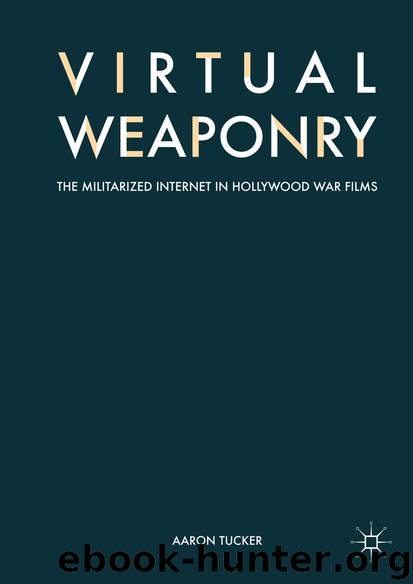Virtual Weaponry by Aaron Tucker

Author:Aaron Tucker
Language: eng
Format: epub
Publisher: Springer International Publishing, Cham
Playing War: The Avatar-Soldier in Gamer
While not yet the all-encompassing virtual realities that require cocooning beds and wraparound headgear (yet), military-style video games were and continue to be massively popular. 14 As proof, the publisher of the Call of Duty games announced in 2014 that sales of the series had “topped $10 billion in worldwide sales since its creation more than a decade ago,” adding that “in the first week following the release of Call of Duty: Advanced Warfare, gamers played more than 370 million online matches and leveled up more than 200 million times in the game’s online multiplayer mode” (Poeter para. 1). Activision’s focus in the press release on the online/Internet-enabled portion of the game is crucial: for most players of these games, the single-player mode is nowhere near the main draw; rather, it is the ability to play in real time against other players over the Internet and engage, with increasingly realistic weapons in increasingly realistic environments (i.e., a VR-like environment), in military combat. This ability to play against real players, not AIs, via the Internet, makes the combat more realistic and believable; this is then even further enhanced by the real-time socializing that takes place in these spaces, including voice chat, online ranking systems and leader boards. All these virtual components mix together to make the narratives and value systems created and/or reinforced by the games that much more rhetorically effective than a single-player, non-networked game.
In general, video games are effective (ideological and practical) pedagogical tools: Annadale argues in “Avatars of Destruction” that “thanks to their immersive qualities, games give the players a much greater sense of actually performing an action rather than reading about it or seeing it, and thus the … tactics and consequences gather a concrete immediacy” (98). Mead adds that “videogames provide a powerful, motivating context for learning and practicing new skills. Because these games are interactive, players must take an active role in this learning, making them agents of knowledge” (67). Yet very often, the learning takes place within a military environment where “the viewer-cum-participant/agent is, virtually speaking, outfitted as a soldier—equipped with weapon and ammunition, complemented by navigation and other devices that monitor resource levels and scan for threats—and positioned to act against an imposed enemy” (LaRocca 32). Echoing this book’s introduction’s understanding of the “participation” that the war film demands/creates, when video games are based around military combat, tactics and themes, the (most often) civilian player, virtually “outfitted as soldier,” becomes an agent of military “knowledge” with an active participatory role in the violent acts of the games. These games are very effective: David A. Clearwater’s “Living in a Militarized Culture: War, Games and the Experience of the U.S. Empire” explores the phenomenon of the first-person shooter (FPS) in a post-9/11 world, arguing that the civilian uptick in immersion in “virtual battlefields and imagined theatres of war” (264) act like “recruiting programs” (277). He quotes Wardynski’s argument that such video games are coming to replace experiences of the past
Download
This site does not store any files on its server. We only index and link to content provided by other sites. Please contact the content providers to delete copyright contents if any and email us, we'll remove relevant links or contents immediately.
Call Me by Your Name by André Aciman(20372)
Ready Player One by Cline Ernest(14524)
How to Be a Bawse: A Guide to Conquering Life by Lilly Singh(7391)
Wiseguy by Nicholas Pileggi(5671)
The Kite Runner by Khaled Hosseini(5083)
On Writing A Memoir of the Craft by Stephen King(4863)
Audition by Ryu Murakami(4850)
The Crown by Robert Lacey(4723)
Call me by your name by Andre Aciman(4619)
Gerald's Game by Stephen King(4582)
Harry Potter and the Cursed Child: The Journey by Harry Potter Theatrical Productions(4440)
Dialogue by Robert McKee(4321)
The Perils of Being Moderately Famous by Soha Ali Khan(4169)
Dynamic Alignment Through Imagery by Eric Franklin(4118)
Apollo 8 by Jeffrey Kluger(3637)
Seriously... I'm Kidding by Ellen DeGeneres(3577)
The Inner Game of Tennis by W. Timothy Gallwey(3575)
How to be Champion: My Autobiography by Sarah Millican(3555)
Darker by E L James(3479)
